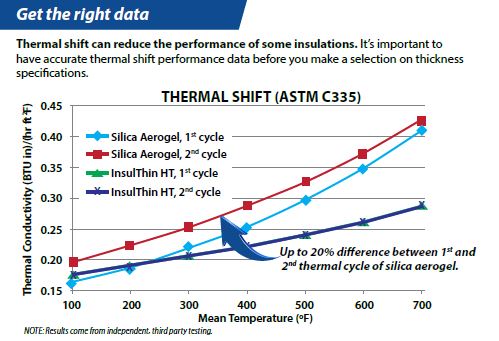When Calculated Results Don’t Match Field Results
As we continue to wade through the massive amounts of data and analyses we come across on a daily basis, there is one crucial thing to keep in mind: data aren’t always accurate. This can be caused by a number of different factors, including inaccurate assumptions and manufacturer performance data that do not fully reflect the conditions to which the insulation will actually be subject.
When it comes to data and testing in the industrial insulation industry, each insulation material is put through a rigorous testing sequence to determine whether or not it can withstand the demands of its everyday application. Organizations like ASTM develop tests and standard specifications that are specific to the material and the intended application to ensure that the insulation products perform as expected. While most of the time, these test are thorough and accurate, periodically they fail to test for unforeseen variables, like thermal shift.
Thermal shift is the permanent change in an insulation material’s thermal conductivity due to exposure to high temperatures (>300°F), that is made apparent only after the insulation has undergone one or several heating and cooling cycles.
When industrial insulation is tested for thermal performance via ASTM C518 (Standard Test Method for Stead-State Thermal Transmission Properties by Means of the Heat Flow Meter Apparatus) for flat surfaces and ASTM C335 (Standard Test Method for Steady-State Heat Transfer Properties of Pipe Insulation) for cylindrical surfaces, the material is tested between 100 and 700 degrees at 100 degree increments (i.e. 100, 200, 300…700°F). In these tests, traditional insulations such as mineral wool, calcium silicate, perlite and microporous insulations maintain consistent thermal performance after many heating and cooling cycles. Significant changes with respect to the thermal performance of traditional industrial insulation under these conditions have never been observed. As a result, both tests adopted an assumption that thermal cycling was not a factor that affected the thermal performance of an insulation material, and as such it was not included in the test methodology.

Unfortunately, it was recently discovered that this can be a flawed assumption. While traditional insulations maintain consistent thermal performance throughout several thermal cycles, a respectively newer insulation, silica aerogel, does not. In the lab on the first heating cycle, silica aerogel products consistently meet the thermal performance requirements in the ASTM specification when tested up to 700°F, and this performance is reflected on product data sheets for silica aerogel. However, when silica aerogel products are cooled and reheated and the test repeated at the same set points, the thermal performance sees a 20-40% drop (depending on the temperature) in thermal performance, meaning that it no longer meets the ASTM test specifications after the first thermal cycle.
Fortunately, now that we know that this occurs with silica aerogel products, we can take the appropriate steps to account for this issue to ensure that desired safe-to-touch temperatures and thermal performance remain consistent. Depending on the application conditions, additional layers of silica aerogel material may be required to compensate for the degradation of thermal performance. Computer programs such as NAIMA’s 3E Plus can be used to determine the correct thicknesses of silica aerogel blankets for flat and pipe sections by using the values of the compromised material rather than the ASTM or product data sheet values. Although this would require additional effort to determine the correct thickness of silica aerogel insulation, the expected performance would be a better approximation of what can be anticipated.
There is an important precedent here from the residential insulation world. After it became known that cellulose insulation settles over time thereby reducing its R-value, the FTC Home Insulation Rule was amended to require a greater initial thickness be installed so that the ultimate settled thickness would achieve the desired R-value.
While there are many variables when it comes to specifying insulation for an industrial system, the data should be something that you can rely on to help make the best decisions to achieve maximum performance, safe-to-touch temperatures, and cost-effective installation and maintenance. If you have any additional questions regarding any of the ASTM test methods or specifications, feel free to contact us, and we will be happy to explain it in greater detail. In the meantime – sort through the details carefully by understanding the limitations of the test conditions, data collection, test assumptions and conclusions.
If you would like to learn more about the topics in our Decluttering the Data series (thermal performance variations between flat and round surfaces, understanding corrosive potential test methods and standard specifications, and thermal shift), please consider attending our webinar, Decluttering the Data to Achieve Maximum Insulation Performance, on December 9th at 2:00 p.m. ET/ 11:00 a.m. PT.
